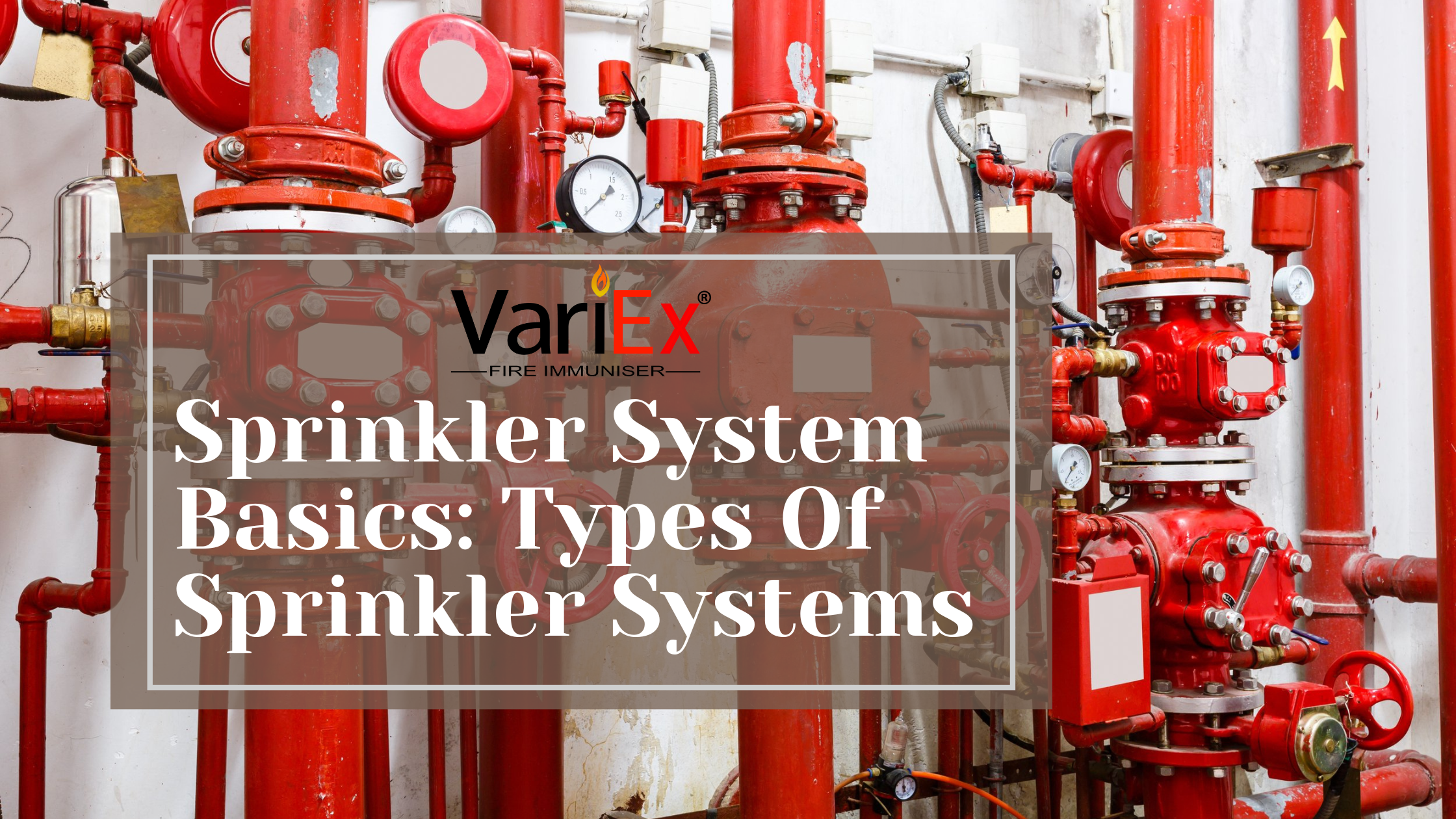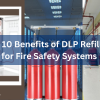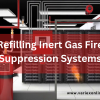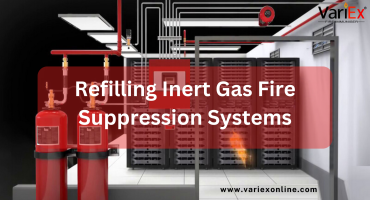![]()
Fire Immuniser
+91-7829629111
Email: info@variex.in
Varistor Technologies Pvt. Ltd.
Block-1, First Floor, Ardente Office One, Hoodi Circle, ITPL Main Road, Bengaluru, Karnataka 560048, IN
Sprinkler System Basics: Types Of Sprinkler Systems
Sprinkler systems are essential components of fire protection systems, designed to suppress or extinguish fires in various environments. Understanding the different types of sprinkler systems is crucial for ensuring the safety of people and property. Here, we delve into the basics of sprinkler systems, exploring their types and functionalities.
Wet Pipe Sprinkler Systems:
- Components: Consist of pipes filled with water under pressure, sprinkler heads, control valves, alarm devices, and a water supply source (such as a dedicated water tank or municipal water supply).
- Advantages: Simple design, quick response time, low maintenance requirements, and reliability.
- Limitations: Susceptible to freezing in cold environments, potential for water damage if a sprinkler head accidentally activates.
- Installation: Typically used in heated indoor environments where freezing is not a concern.
Dry Pipe Sprinkler Systems:
- Components: Similar to wet pipe systems but use pressurized air or nitrogen instead of water in the pipes. They include a dry pipe valve, control panel, air compressor, and alarm devices.
- Advantages: Freeze protection, suitable for unheated spaces, minimal risk of water damage.
- Limitations: Longer response time compared to wet pipe systems, more complex installation and maintenance requirements.
- Installation: Ideal for areas prone to freezing, such as attics, parking garages, and warehouses without heating.
Pre-Action Sprinkler Systems:
- Components: Combine elements of both wet and dry pipe systems, including a pre-action valve, fire detection system (such as smoke detectors or heat sensors), control panel, and alarm devices.
- Functionality: Require two steps to activate—fire detection triggers the pre-action valve to allow water into the piping system, and then individual sprinkler heads open in response to heat.
- Advantages: Minimizes accidental water discharge, suitable for areas with sensitive equipment or valuables.
- Limitations: More complex design and installation, higher initial cost.
- Installation: Commonly used in environments where water damage must be avoided, such as data centers, museums, and libraries.
Deluge Sprinkler Systems:
- Components: Include an open piping system with all sprinkler heads connected to a water supply source, deluge valve, fire detection system, control panel, and alarm devices.
- Functionality: Upon fire detection, the deluge valve opens, releasing a large volume of water through all sprinkler heads simultaneously.
- Advantages: Rapid suppression of high-hazard fires, effective for protecting areas with highly flammable materials.
- Limitations: Potential for extensive water damage due to the large amount of water released.
- Installation: Typically installed in high-risk environments such as chemical storage facilities, aircraft hangars, and power plants.
Understanding the intricacies of each type of sprinkler system is crucial for designing and implementing effective fire protection strategies tailored to specific environments and hazards. Additionally, regular inspection, testing, and maintenance are essential to ensure the reliable operation of sprinkler systems in emergency situations.
Frequently Asked Questions
Wet pipe sprinkler systems are constantly filled with pressurized water and activate immediately upon fire detection. In contrast, dry pipe systems use pressurized air or nitrogen, which only allows water into the pipes when a fire triggers the system.
Sprinkler systems are commonly installed in commercial buildings, industrial facilities, residential properties, and high-rise structures. They are also used in specialized environments such as museums, data centers, and chemical storage facilities.
Yes, sprinkler systems require regular inspection, testing, and maintenance to ensure they are operational in the event of a fire. Maintenance tasks may include checking for leaks, testing control valves, and verifying proper water flow.
Yes, there are alternative fire suppression systems such as foam, gas, and powder-based systems that use different extinguishing agents depending on the specific fire hazard and environmental considerations.
While sprinkler systems are highly effective in suppressing most types of fires, their effectiveness may vary depending on factors such as fire size, location, and the presence of flammable materials. Proper system design and maintenance are essential for optimal performance.
Final Say
At VariEx.in and VariexOnline.com, we specialize in supplying and installing top-quality fire fighting systems and equipment. From fire extinguishers to advanced suppression systems, we offer comprehensive solutions tailored to your needs. Our experienced team ensures precise installation and maintenance for optimal safety.
Trust VariEx for reliable fire protection. Contact us online or call 7829629111 to learn more.










